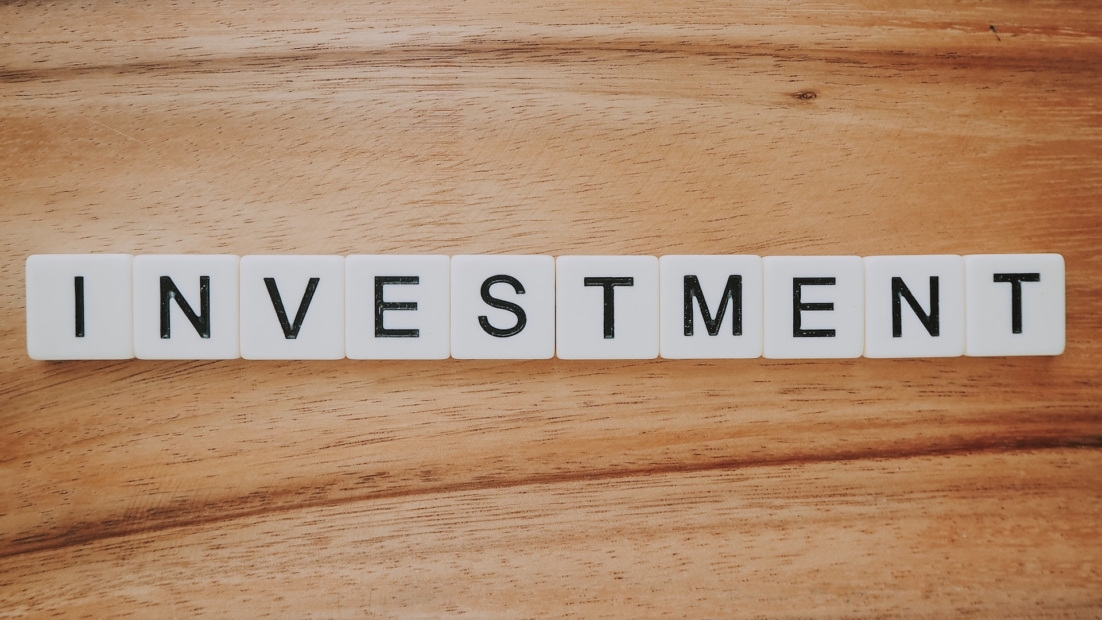There are many convincing reasons to look into the possibilities of investing money. These include exciting travel destinations, a good education for the children and, above all, being able to look to the financial future without worries. But an efficient investment strategy has to be learned.
Use this article to find out about the main investment solutions and identify the investment strategy that is right for you.
Contents
- 1 The most important facts in brief
- 2 Investing money in Switzerland: an overview of investment forms
- 2.1 1. Call money and time deposit
- 2.2 2. Bonds
- 2.3 3. Shares
- 2.4 4. Funds
- 2.5 5. ETFs
- 2.6 6. Real Estate
- 2.7 7. Precious Metals (Gold & co.)
- 2.8 8. Cryptocurrencies
- 2.9 9. Foreign Currency
- 2.10 10. Private Markets
- 2.11 11. Invest money through asset managers
- 2.12 Professional asset managers start with the analysis
- 3 Investing Money Efficiently: How to Find Your Personal Investment Strategy
- 4 Early start expands investment opportunities
- 5 Investment strategy: practical examples
- 6 Opportunities in Switzerland’s three-pillar system
- 7 Frequently asked questions (FAQ)
The most important facts in brief
- An investment strategy is optimal when it best suits the investor.
- Diversification can reduce risks.
- Investing money regularly over the long term is the safest way to build up wealth.
- Digitization enables investment advice for broad segments of the population.
Investing money in Switzerland: an overview of investment forms
When it comes to the question of the right form of investment, there is less of a distinction between good and bad. Which financial product makes sense for you to invest in depends much more on your investment horizon, the timing and, in particular, your personal risk tolerance. In addition, your financial requirements also determine the optimal investment strategy. However, in order to be able to make the right investment decision at any time, you should be informed about all essential forms of investment.

1. Call money and time deposit
Overnight money is a safe and flexible investment that complements your checking account. In a call money account, you deposit money that you would like to have at your disposal at any time. However, with the start of the low-interest phase, many banks have discontinued their offers for call money. While offers are now on the rise again in other European countries, they are limited in Switzerland and hardly any significant interest can be expected. In addition, offers for call money tend to appeal to well-off investors due to the minimum sum of CHF 100,000 that is often required.
While the interest rate on overnight deposits can change at any time, the interest rate on time deposits is guaranteed during the term of the deposit. Time deposits, also known as term money, are therefore suitable as an investment for funds that you only need in the medium term. In Switzerland, time deposits are usually offered with terms of 3 to 24 months. Security and the ability to plan are the main features of this type of investment. However, you cannot currently expect more than one percent interest for this investment. Therefore, it is not suitable as an investment for long-term wealth accumulation.
2. Bonds
Bonds are issued by companies or governments as a source of financing and are usually rather low-risk investments for investors in comparison. They belong to the group of fixed-interest securities. The issuer undertakes to pay out the capital plus the agreed interest at maturity. In Switzerland, private investors often invest in so-called medium-term notes. The issuers are the public sector and credit institutions. Medium-term notes are offered with maturities of up to ten years. So if you only need or want to get your invested money back within the next ten years, bonds are a possible form of investment.
By investing in shares, you become a direct shareholder in a company. As a shareholder, you share in the profits of the company. This share is paid out as a dividend. The return prospects for shares are promising in the long term. However, the possible price fluctuations must be taken into account.
Investing in individual shares requires not only a sound know-how but also an enormous time commitment. You should have sufficient knowledge of the markets in which you invest. In addition, stock market trading requires sound research as well as an assessment of company key figures.
To make the risk involved in trading stocks calculable, you should only invest that part of your assets in stocks that you can do without for a longer period of time. You must also be able to deal with short-term losses on individual stocks. Basically, the more specialized and narrow the markets are, the higher the risk. In this respect, the strategy must distinguish between promising short-term price opportunities and long-term investments in established companies with possible regular dividend payments. In the past, those who follow the basic rules for investing in the stock market have always been able to achieve returns well above savings interest rates for terms of ten years or more.
Reading-Tip: Investment Strategy in Focus: The Power of Income Strategy
4. Funds
Fund companies invest the money paid in by investors in various securities from different markets. The assets represent a so-called special asset, which is held in trust at a bank. This means that they are managed separately from the company’s assets and are therefore protected in the event of the fund company’s insolvency. Fund units can be returned to the fund company at the current price. When purchased, there is usually an issue surcharge and the fund company takes an annual management fee for its management.
Each fund invests in defined target markets. These can be, for example, global companies, high-opportunity companies in emerging markets or companies in the healthcare sector. This gives you the option of investing primarily in certain markets or diversifying your investment worldwide.
For long-term asset accumulation, fund savings plans with fixed monthly installments are suitable. This allows you to take advantage of the cost-average effect: when prices are low, you buy a higher number of units, and when prices are high, you buy a lower number.
Compared to investing in individual shares, there are the following advantages in particular:
- With a fund share, you invest in a large number of companies at the same time.
- The fund management takes care of buying and selling the individual securities.
- Risk diversification is made much easier with a fund.
- With fund savings plans, you save regularly and invest in the capital market for the long term.
Investing in funds is also a long-term investment. When making comparisons, therefore, pay primary attention to long-term performance.
5. ETFs
The principle of ETFs is initially the same as that of a “normal fund”. The main difference is that ETFs are not actively managed. Simply put, an ETF copies the composition of an index. This saves costs, which has made ETFs very popular in recent years.
For example, if you want to invest broadly in large and medium-sized companies worldwide, invest in an ETF that tracks the MSCI World Index. This index tracks about 1,500 stocks from over 20 countries. It is therefore considered a basic investment, even for beginners.
In a long-term comparison, investors have been able to generate returns of around six to nine percent in recent decades with a broad-based ETF such as the MSCI World.
6. Real Estate
The real estate market has only known one direction in recent years: up. Low interest rates have led investors to increasingly look for alternatives to safe savings investments. Because of the low interest rates on loans, many buyers have taken on high debts.
Real estate is also considered quite crisis-proof in Switzerland, especially in the preferred locations. However, this has caused real estate prices to literally skyrocket. The home ownership rate in Switzerland is therefore low, at around 35 percent, even by international standards.
If you invest in an owner-occupied home, you are protected against rent increases and terminations. This value will benefit you in retirement in the form of saved rent. If you purchase a property in order to rent it out, you will generate rental income in retirement and thus additional income, provided the debts for the property have been repaid.
The investment in land is considered solid and safe. Nevertheless, the term itself expresses that it is not a flexible investment – it is “immobile”. That means real estate is a way to diversify your portfolio. However, keep in mind that your life plans may change and also, for example, a change of location for professional reasons may make sense. In addition, initially, due to the high real estate prices in Switzerland, a high equity investment is required. Triggered by the ECB’s interest rate adjustments, the real estate market also seems to be calming down somewhat at the moment. You should therefore not necessarily assume further annual price increases above seven percent for your investments, as has often been the case in recent years.
7. Precious Metals (Gold & co.)
Gold, silver, platinum and other precious metals are not only among the oldest forms of investment. They are also considered a crisis-proof investment. At the outbreak of the pandemic, the price of a troy ounce of gold therefore rose to over 2,000 dollars by the summer of 2020. But the stock market recovered from its slump quickly thereafter. At the same time, the price of gold fell again to around 1,700 dollars at the end of 2020. It is now (as of January 2023) around 1,900 dollars per troy ounce.
Experience shows that precious metals do not generate returns. You should take this into account in your considerations if you are interested in the supposedly safe investment. Overall, precious metals are therefore only recommended as an admixture and diversification of your assets.
8. Cryptocurrencies
In addition to Bitcoin, the first and largest cryptocurrency, there are now a large number of digital currencies worldwide. They are based on blockchain technology and, compared to conventional currencies, therefore only exist as data within a global computer network. For private investors, these investments represent an extremely speculative investment alternative.
The cryptocurrency Bitcoin has been around for over 10 years. Nevertheless, cryptocurrencies are not officially recognized currencies. For digital money, you first need a digital wallet. Trading is then done on one of the crypto exchanges.
The risk of cryptocurrencies is enormous, because no government guarantees the value of cryptocurrencies. Currently, cryptocurrencies can therefore not be classified as a safe investment and are not suitable for retirement planning.
If you are interested in cryptocurrencies despite the high risks, consider the following points:
- The prices of cryptocurrencies are very volatile. Exclusively supply and demand determine the price.
- New and small cryptocurrencies are particularly risky, as they may not continue due to lack of capital.
- Since cryptocurrencies are not regulated, there is no overarching supervision. Thus, there is a lack of any investor protection, such as deposit insurance.
- Countries sometimes react with reservations towards digital currencies. In China, for example, crypto trading is prohibited. The European Central Bank is considering its own digital currency, which would weaken the other cryptocurrencies.
9. Foreign Currency
Trading in currencies (foreign exchange trading) is highly speculative – exchange rates can fluctuate enormously. In addition to direct foreign exchange trading, foreign currency accounts are also offered for investments such as time deposits or bonds. Please note that you bear a double risk. In addition to the issuer risk, there is also the exchange rate risk. This means that even small fluctuations in exchange rates can wipe out interest rate advantages. In addition, foreign currency bonds are often only traded on the stock exchange to a limited extent, which can mean unfavorable prices when sold.
The price development of currencies depends in particular on the following factors within the respective country:
- economic stability
- political stability
- risk of inflation
- national debt
10. Private Markets
Private markets are investments that are not traded on a stock exchange, i.e. are not publicly available.
They are as follows:
- Private Equity: investments in unlisted companies.
- Private Debt: unlisted debt securities.
- Private Infrastructure: Investments in infrastructure assets such as water supply, waste disposal, bridges or hospitals.
- Private Equity Real Estate: Investments in real estate in all sectors.
Private Markets has long been the preserve of institutional investors, but has now grown in importance among high net worth private investors. It involves risk capital. The high potential returns are offset by the risk of total loss. Therefore, the investment form serves as an admixture to optimize returns for very large assets.
11. Invest money through asset managers
It is no longer necessary to be a millionaire to invest your money professionally. Digitization and the use of funds and exchange-traded funds (ETFs) are opening up wealth management solutions to a broad public. Finally, investing money profitably requires time, which is not sufficiently available to everyone.
Nowadays, it is possible for everyone to make use of professional asset management – also known as asset management. Depending on the provider, you can start with an amount of about 30,000 francs. Fees have also become affordable for asset managers with a digital approach.
Professional asset managers start with the analysis
Experienced investment advisors will first determine your needs.
This involves clarifying the following points, among others:
- How much risk are you able to take?
- What level of risk are you willing to take?
- What is your investment horizon?
Based on the analysis, the asset management company will submit an individual investment strategy to you. The following basic orientations are possible:
- conservative (low share of equities, low risk of loss, lower return prospects)
- balanced (medium share of equities and medium risk)
- aggressive (higher share of equities, higher return prospects, higher risk)
In practice, you may find further, finer gradations.

Investing Money Efficiently: How to Find Your Personal Investment Strategy
Studies show that most of the long-term return is determined by the strategy you choose. It is important that you stick to the chosen strategy over the long term. So make sure that the investment strategy suits you and your personal circumstances. The following sections will help you find your investment strategy.
Portfolio theory: Spreading assets – optimizing return and risk
If you have studied investment strategies a bit more intensively, you have already come across the hint that you should diversify your assets. But what does diversify mean and what mix makes sense?
Since its publication in 1952, the portfolio theory of the US economist Harry Max Markowitz has become one of the most successful and important theories of capital market theory. Its central concept is risk diversification, by which an investor’s assets are skillfully invested to simultaneously achieve the highest possible return while taking as little risk as possible.
It means spreading one’s portfolio across multiple asset classes to reduce dependence on any one investment. A well-diversified portfolio can help investors limit their risk while taking advantage of potential gains.
Key points in asset diversification are:
- Assets are divided into different asset classes.
- The asset classes should have different potential returns and risks (including equities and bonds).
- Within the asset classes, the selection of individual stocks leads to an optimization of the risk-return ratio (such as global equities and emerging market equities).
The risk of losses generally decreases with the breadth of the portfolio’s risk diversification. However, it should be noted that diversification does not automatically increase returns, but rather ensures capital preservation and hedging.
Diversification depends on the amount of capital invested
The smaller the investment, the less diversification usually comes into play for the investor.
With 1,000 francs, you can only invest directly in a few asset classes. For this reason, investing in ETFs or funds is particularly suitable for small amounts, as here you are already investing directly in diversified portfolios.
If more than 10,000 francs are invested, a loss – depending on your financial status – can be quite painful. If you put all your money into a single investment, you cannot rely on capital preservation and it can be difficult to recoup the loss through future returns. That’s why it’s hugely important to plan your portfolio carefully.
In practice, this means that bonds, precious metals or real estate are considered to be safer forms of investment. Based on the amount of your total assets, you decide in how many different “safety components” you invest your money. Accordingly, up to a certain level of assets, it may be sufficient to include only bonds as “safety anchors” in your portfolio. For large assets, another asset class such as real estate makes sense.
From investor type to investment strategy
When it comes to investing money optimally, it is not a question of finding the only right strategy, but rather the right one.
To do this, consider the following personal requirements:
- Investment horizon: Have you started your first job after graduation and are beginning to plan for retirement? Or are you in your mid-forties and intensively thinking about how you can secure your standard of living later in retirement? Perhaps you have also reached retirement age and are now concerned with preserving your assets. So is it a matter of short-, medium- or long-term investments?
- Risk: How much risk are you willing to accept? How do you personally respond to temporary losses in your wealth building blocks?
- Investment goals: Is it about retirement planning or achieving specific goals, such as purchasing real estate?
- Financial background: How large are your assets and your monthly available budget for wealth accumulation?
- Financial experience: Do you have experience trading financial instruments and what amount of time would you like to spend on this on a regular basis?
Investment fees
Fees come at the expense of returns. Therefore, it is important to compare the fees of different providers. Nevertheless, you should always consider the service you receive for charged fees. For example, active asset management can pay off in the long run. After all, as a private investor, you usually have neither the know-how nor the time required to make sound investment decisions on a daily basis.
The main fees that occur as part of your investment are:
- Fees for buying and selling: most financial products have a transaction fee. Fees are incurred on securities transactions on the part of the exchange and the contracted bank.
- Custodial fees: Banks charge custody fees for holding securities in a securities account. Online brokers offer lower fees.
- Issue surcharge for funds: The surcharge is calculated on the purchase of investment funds. It can amount to up to five percent of the purchase price.
- Administration fees: Administration or management fees are usually calculated as an annual percentage. It is important to pay attention to what this fee is for and what it includes. For actively managed funds, the fee is for fund management, which is research and professional trading.
- Follow-up fees: sometimes fees are charged for changes to the investment product or risk profile. So pay attention to what potential follow-up costs are associated with a particular investment.
Early start expands investment opportunities
Compound interest is a crucial aspect of earning a high return. It causes assets to grow faster and faster as the investment period progresses.
The probability of making a loss on an investment decreases over time. This means that the chances of success increase with a long-term investment.
Historical analysis of the Swiss stock market up to 1969 shows that a positive return was achieved in 40 out of 53 years. These previous results are no guarantee of future gains. But they demonstrate that it can be worthwhile to be in it for the long term, despite fluctuations in share prices.
The reliable way: invest regularly
Experience shows: regular investing beats hectic trading. In any case, it is hardly possible to determine exactly the right time to buy or sell every security. Saving instead of waiting is therefore the motto.
In the case of fund savings plans, the cost-average effect also shows how advantageous regular saving can be: If you invest a fixed amount each month, a higher number of units will be bought when prices are low and a lower number when prices are high.
Patience pays off: Learning to invest
The more time you have until retirement, the easier it is to practice patience to set yourself up for long-term success. The stock market provided an impressive example of this in the 2020 corona year. When the pandemic broke out in the spring, the capital markets collapsed and double-digit price losses were the order of the day. But by the end of the year, the barometer had largely returned to pre-pandemic prices. The market is wave-like. But in the long term, economic growth leads to rising prices.
Recognizing unprofitable loss leaders
Excessive returns can generally only be achieved with increased risk. Therefore, compare the possible returns of an asset class with the offer you are presented with. For example, if yields of two percent are common for time deposits with a certain term, you should become critical of an offer with five percent interest. Either the offer comes from an unsound provider or the economic framework data of the issuer or the country from which the offer originates are desolate.
Investment strategy: practical examples
To illustrate a differentiated investment strategy, here are three examples.

Young people
Young people have the greatest latitude for riskier investments because they still have many years to recoup any losses.
One possible investment strategy:
- Overnight account (to build up a reserve of about three to five months’ expenses).
- Mutual fund savings plan or ETF savings plan (start with small monthly contributions, equity portion can be 90 to 100 percent depending on direction, use low-cost digital investment advisors)
- Time deposit: If desire to acquire property, park money over medium term via time deposits if necessary.
Middle-aged people
At this stage of life, people should modify their investment strategy somewhat and increase the proportion of investments with a higher degree of security.
One possible investment strategy:
- Call money account (reserve)
- Securities account (limit the share of stocks to 80 percent, the rest fixed-interest securities and precious metals, if necessary use investment advice)
- Fixed-term deposits (for fixed goals such as paying off a mortgage or buying a car)
- Real estate
People of advanced age
With aging, the risk of no longer being able to compensate for losses on investments increases. Therefore, an investment strategy should focus on more defensive options. However, due to longer life expectancies, you do not have to completely forgo opportunities for returns.
One possible investment strategy:
- Call money account (reserve)
- Securities account (limit the share of equities to 50 to 60 percent. Use the remainder in fixed-interest securities and investment advice)
- Real estate (unencumbered)
- Time deposit (short-term time deposits, better interest compared to overnight money, maintain liquidity by splitting into several time deposits with different maturities)
Opportunities in Switzerland’s three-pillar system
In addition to the first pillar for state subsistence and the second pillar for occupational pension provision, the third pillar plays a decisive role within your investment strategy.
Pillar 3a: You enjoy tax advantages within the maximum amounts for the payments into the private pension plan of pillar 3a. Pillar 3a retirement planning is typically implemented with solutions such as life insurance, retirement accounts and retirement savings accounts. This is possible via a bank foundation or via insurance provision with a Swiss insurance company.
Pillar 3b: The investment in pillar 3b is not subject to any state rules. However, the contributions do not have a direct tax effect either. Unlike pensions from pillar 3a, which are fully taxed, however, pensions from the free 3b pension plan are only taxed at 40 percent.
Reading tip: Switzerland’s 3-pillar principle

Frequently asked questions (FAQ)
What is meant by the term “magic triangle”?
The magic triangle illustrates the balance between the three investment objectives of security, return and availability. The three investment objectives depend on each other and relate to each other in a certain way.
There is no investment form that satisfies all three desires. You must weigh which factors are most important to you.
Which investment will give me the best return?
Unfortunately, even the best investment advisors cannot look into the future, but they can look into the past. Of all the investment options, stocks offer the greatest potential for returns, but also increased risk.
You will have to accept short-term losses when investing in stocks. In the long term, however, you can expect a considerable increase in value: over the last 100 years, Swiss share values have increased by an average of seven percent per year.
What basic mistakes should be avoided when investing money?
- Timing and market analysis replace investing money regularly: The safest way to build your wealth is to save regularly over the long term.
- Putting all your eggs in one basket: Think diversification when saving as well as investing.
- Accept high costs: Digitization has led to interesting and at the same time low-cost offers.
- Extrapolate performance from the past: Markets can change.
- Constant buying and selling: Stay true to your strategy and don’t pay unnecessary fees for frequent switches.
What role does inflation play in investing?
The average return on your investments should be above the rate of inflation. You will only achieve this in the long run by taking manageable risks in your investment strategy.
How high should the proportion of liquidity be when investing money?
Liquid investments should be a reserve for expenses that cannot be met from regular income. Experience shows that three to five months’ salary is reasonable for this purpose.
Sources
- [1] lukb.ch
- [2] handelszeitung.ch
- [3] credit-suisse.com
- [4] verbraucherzentrale.de
- [5] zkb.ch
- [6] raiffeisen.ch

